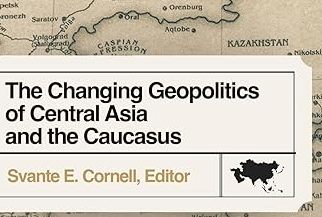DOES TAJIKISTAN PARLIAMENTARY ELECTIONS SPELL THE END OF THE UTO?
By Noor Umarov (3/29/2000 issue of the CACI Analyst)
BACKGROUND: The United Tajik Opposition (UTO) began in the Spring of 1992 when different opposition groups and parties coalesced around the leadership of four political groups and a prominent individual, the country’s most influential religious figure, Akbar Turajonzoda. At that time, Turajonzoda was not a member of any political party, but he supported political and economic reforms and recognized the rights of Muslims to practice their faith openly, without hindrance. The UTO’s first success was achieved in May 1992 when UTO members were included into a coalition government with President Emoli Rakhmanov.
IRAN IN AFGHANISTAN: THE MISSION TO UNDERMINE PAKISTAN
By Ahmed Rashid (3/29/2000 issue of the CACI Analyst)
BACKGROUND: Western and Pakistani diplomats say that during the winter months, Iran has been pouring millions of dollars of arms and ammunition to the Northern Alliance forces led by Ahmad Shah Masud. Iran's efforts are in preparation for what is expected to be a summer of heavy fighting as the Taliban launch a major offensive to conquer the remaining 20% of north eastern Afghanistan controlled by the Northern Alliance. Arms supplies reach the Northern Alliance by train, crossing Turkmenistan and Uzbekistan to southern Tajikistan from where they are trucked across the Amu Darya River to northeastern Afghanistan.
CENTRAL ASIA READJUSTING TO LIFE IN PUTIN’S ORBIT
By Birgit Brauer (3/29/2000 issue of the CACI Analyst)
BACKGROUND: The breakup of the Soviet Union in 1991 was a windfall for the five Central Asian republics, that had previously shown little desire to strive for full independence. Unaccustomed to being on their own or making their own decisions, Kazakhstan, Kyrgyzstan, Tajikistan, Turkmenistan, and Uzbekistan went through a period of euphoria, where anything seemed possible. But the subsequent economic collapse of the countries and open discrimination against ethnic Russians by the titular nationalities in the early 1990s quickly led to disillusionment and triggered a wave of migration.
RUSSIA SLOUCHES TOWARDS CENTRAL ASIA
By Dr. Robert M. Cutler (4/12/2000 issue of the CACI Analyst)
BACKGROUND: Questions about the strategic political realignments of the Central Asian nations are being whispered around the region. This should not come as a surprise. Even before Vladimir Putin was elected Russian president, he showed signs of undertaking a more dynamic and active foreign policy towards Central Asia.



 Silk Road Paper S. Frederick Starr,
Silk Road Paper S. Frederick Starr,  Book Svante E. Cornell, ed., "
Book Svante E. Cornell, ed., "